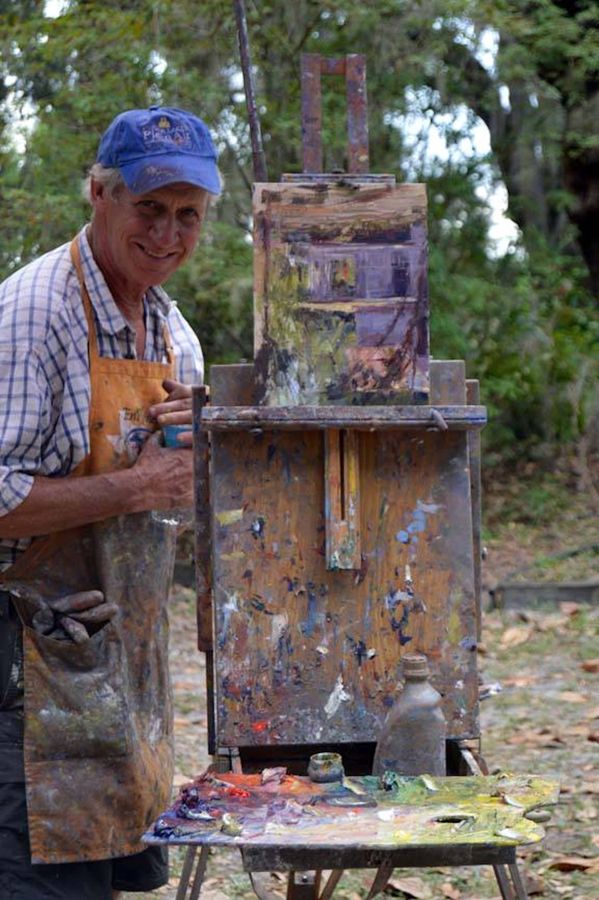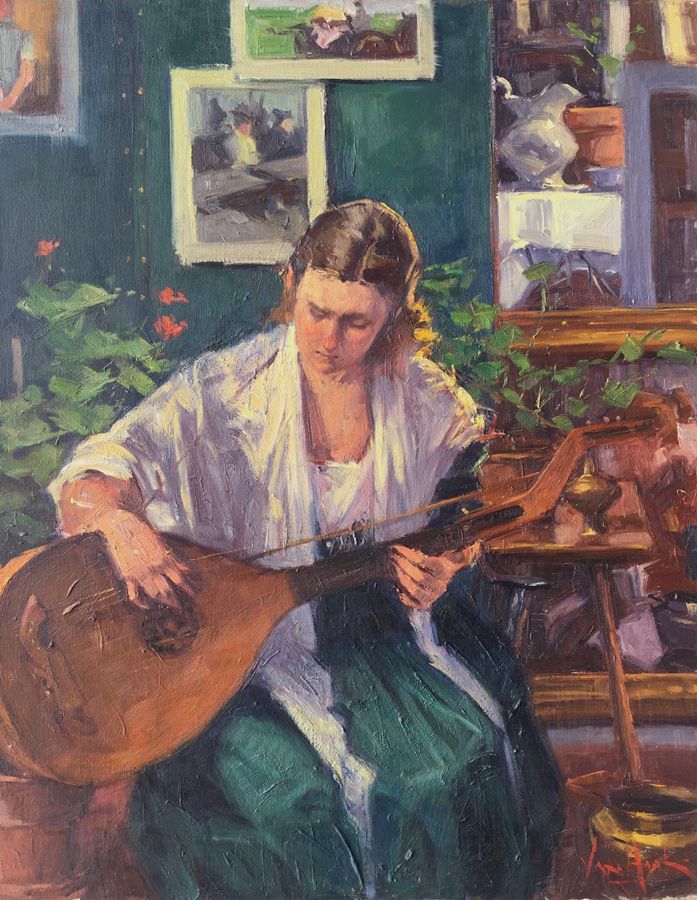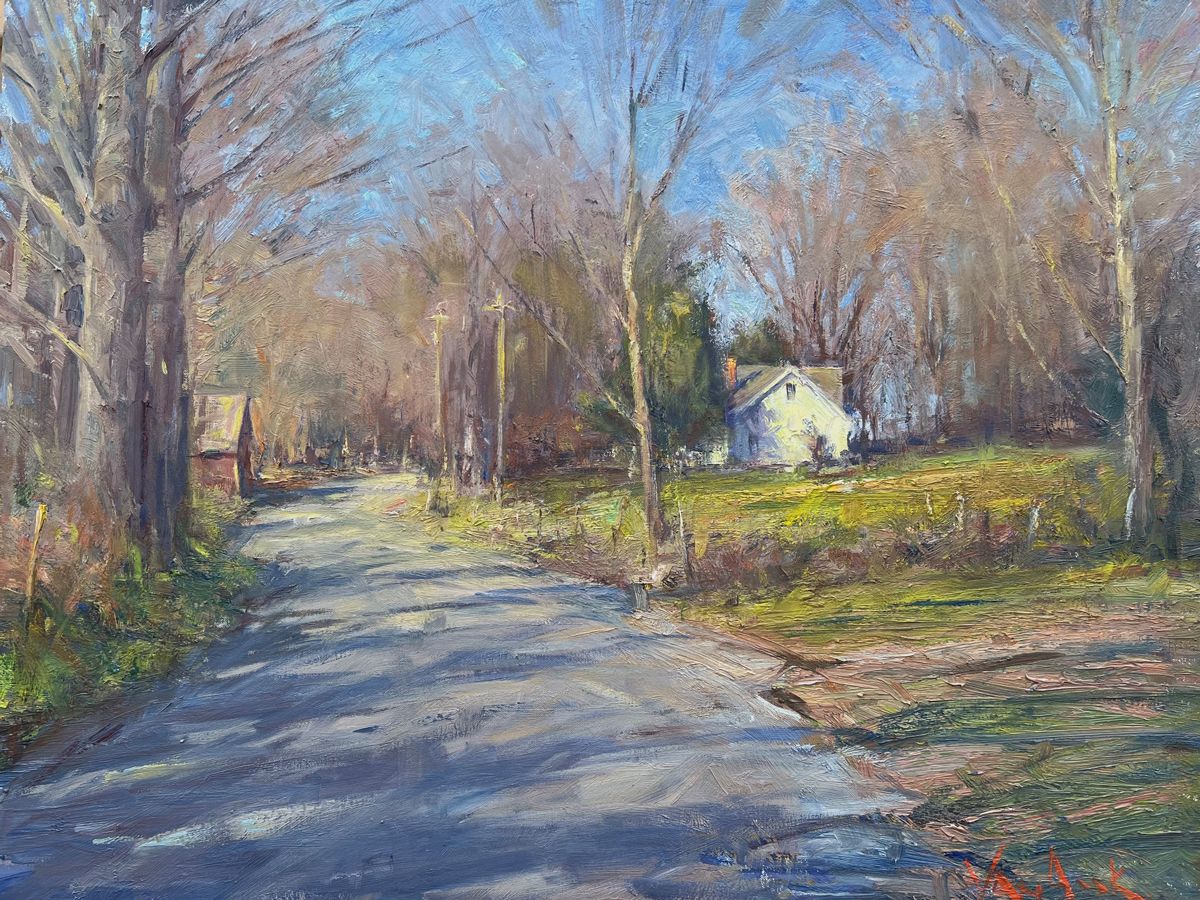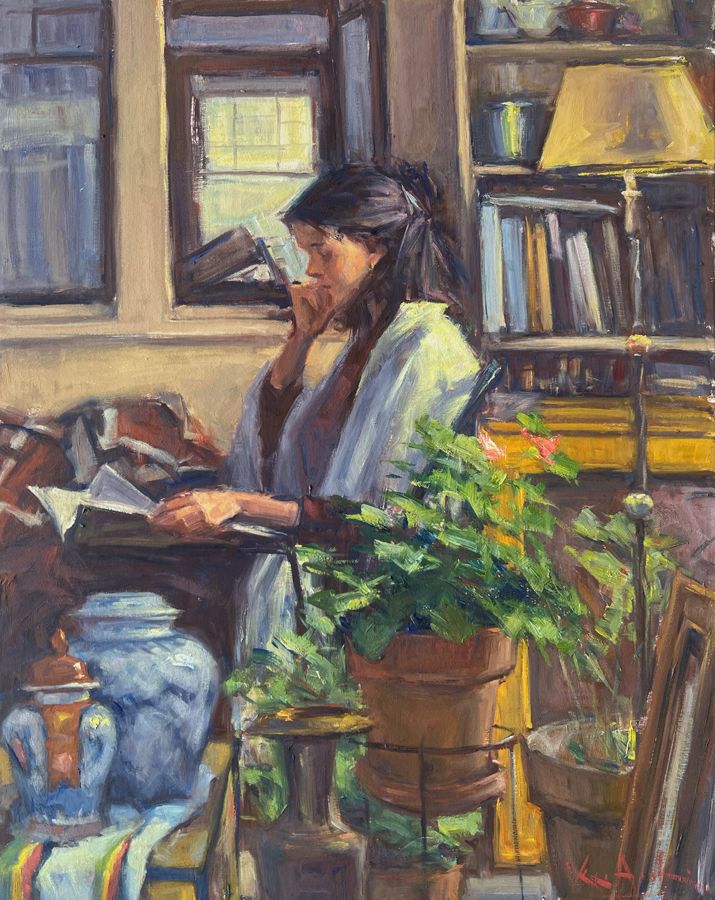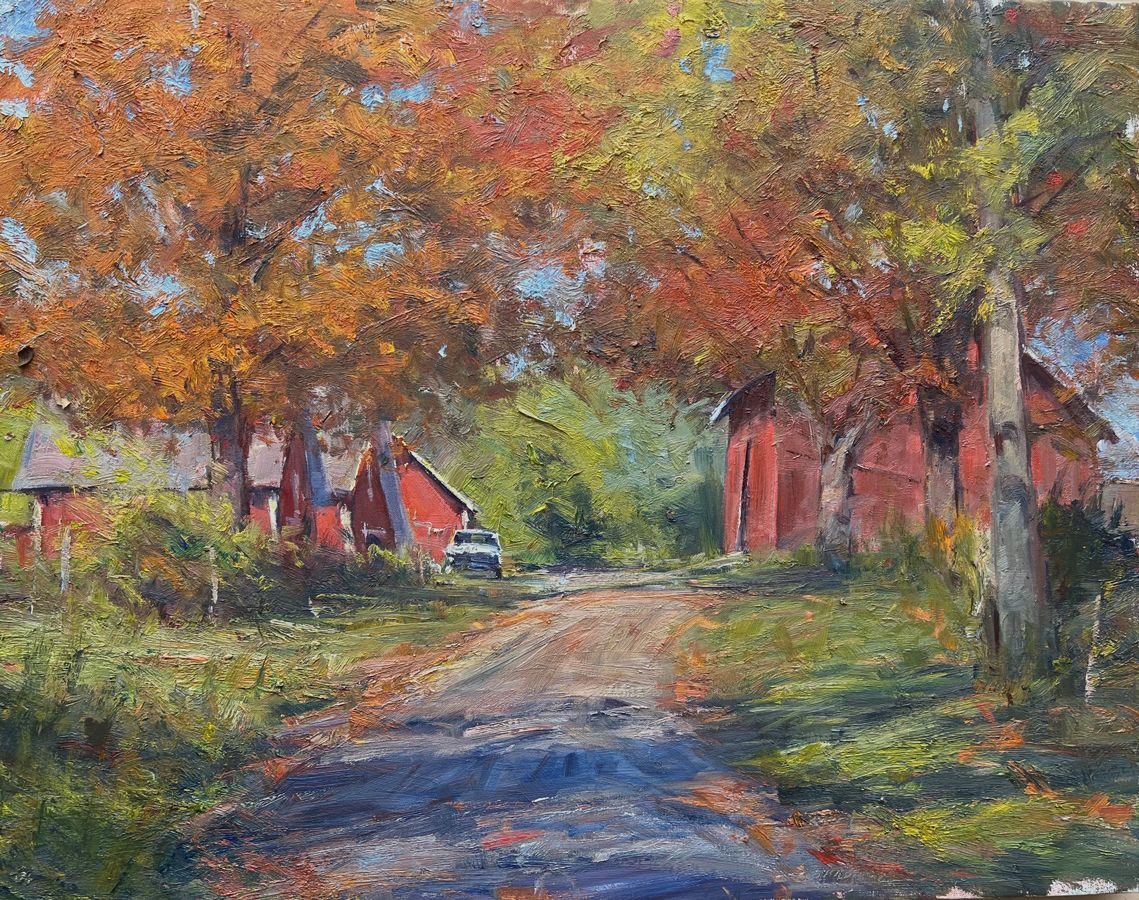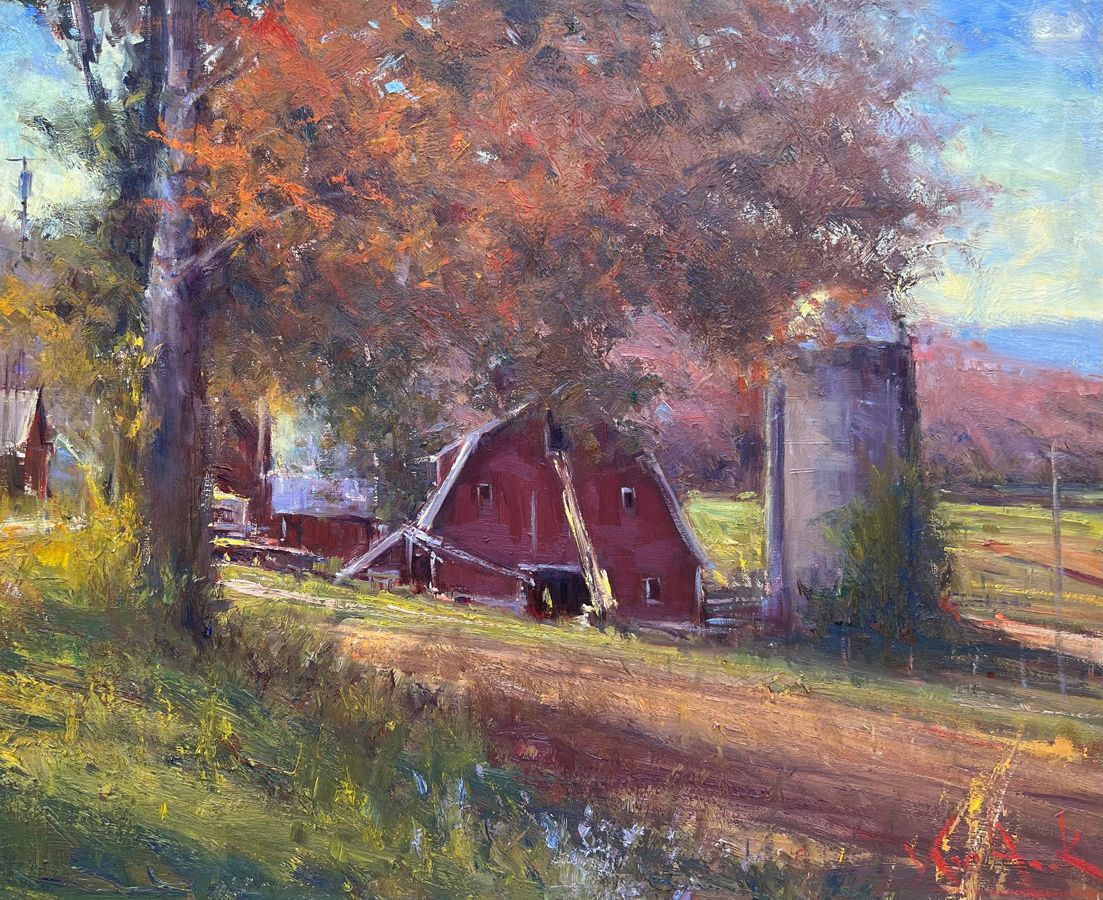
Meet George Van Hook
Marrying Science and Art
{From the 2024 Spring magazine}
Written By Megin Potter | Photos PROVIDED | Artwork by George Van Hook
George Van Hook’s award-winning plein air pastoral landscapes’ loose brush strokes emerge from a bright palette to reflect his fascination with the natural world.
“Since oil paint was put into tubes in the 1830s, it’s been very well engineered to do that because of the synergy between chemists and engineers and the people who made brushes - they were all working naturally together.”
Coupled Creativity
The 1790 family farmhouse in rural Bucks County, PA and the bucolic landscape George grew up in “touched something in my brain,” he said.
George and his wife, Sue, essentially grew up together during the Baby Boom in post-war America, he added. Both his parents were scientists and initially, he was the one interested in science, while Sue studied French at Middlebury College. Through their travels together, however, she became enthralled with the natural world. A Skidmore Professor of Biology and Environmental Science for 18 years, Sue is a mycologist who has traveled the world developing biopolymers. Her work is much more interesting to investigate than anything he’s doing, said George, adding, “I’m the most boring person ever,” with an easy smile to his voice.
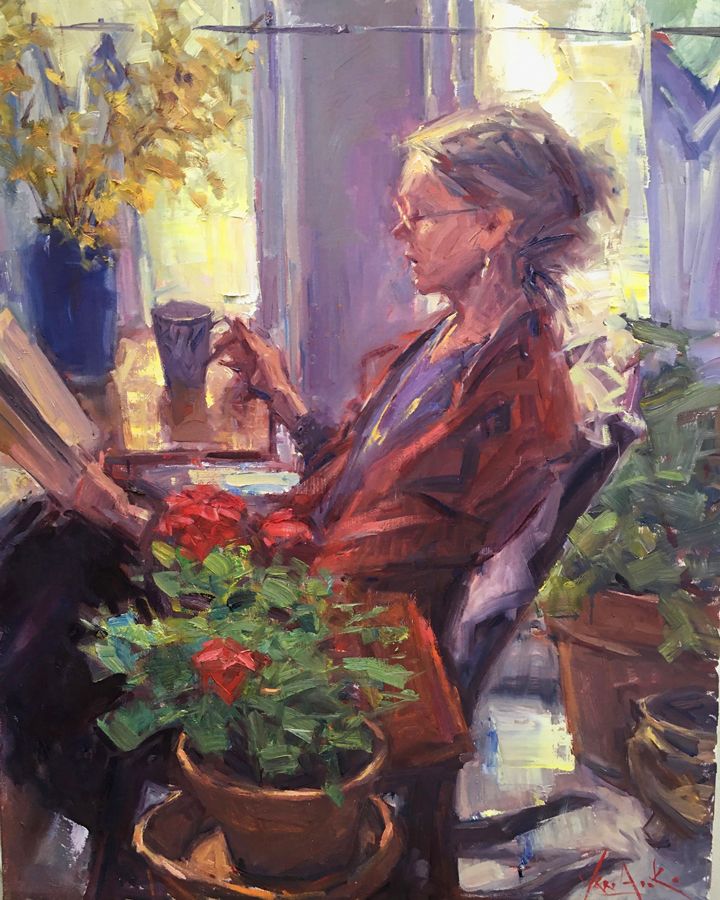
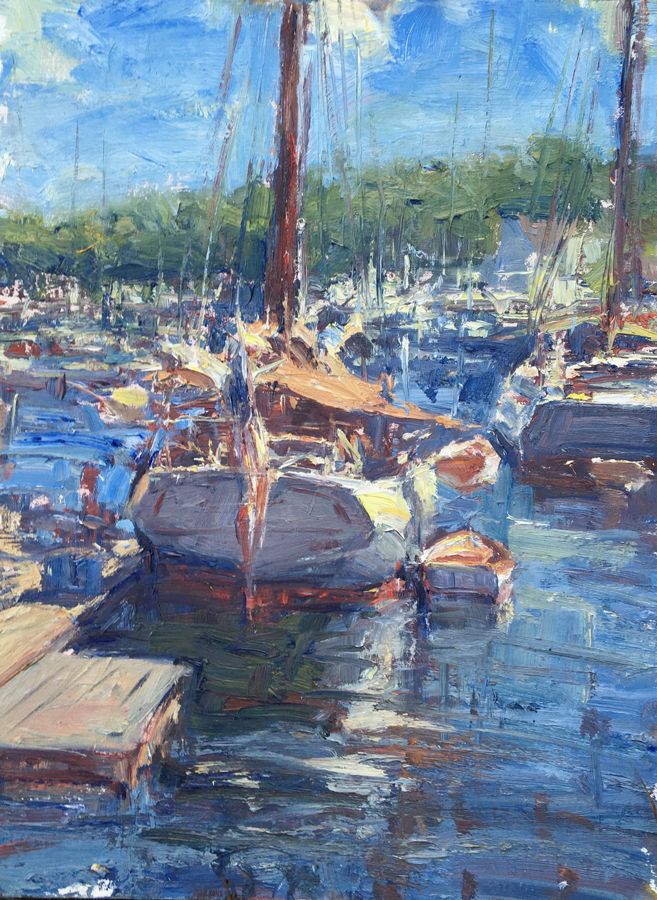
Capturing Disappearing Dynamics
Now, subdivisions and strip malls have replaced the pleasantly prosaic Pennsylvania landscapes George knew as a child. Like artists for hundreds of years before him, George was attracted to the Maine coast, but eventually found it too remote. He and Sue also spent a decade in California, watching it dry out. After a long search, they settled in the “Great Blue Northeast,” relishing its central location, cultural adelights, and plentiful rainfall.
“We have very interesting educational colleges and art museums everywhere and the landscape is like Bucks County’s was – a beautiful, bucolic American landscape. Washington County is simply so beautiful and it’s in the middle of this wide cultural and aesthetic center. We’re very fortunate. The way the lands fold, the hills, how the roads curve around, the forest, the 19th century architecture – these are things I love.”
Immersed in a disappearing landscape, his eye-catching plein air paintings feature wood barns of yesteryear, preserving the vanishing dynamic of their everyday subject matter.
Each day, George sticks to a regular routine; rising at 6:30am, having coffee, and “fussing around painting” until about 3:30pm, when he takes a short nap. Rising to workout, this winter, George is training for a triathlon. After a shower, he plays the piano (which he’s practiced since he was 5 years old), then has dinner and goes to bed. The summer takes him out of his comfortable craftsman style home studio, with its rich natural light, outdoors to paint. Activities like tennis and biking also keep him active.
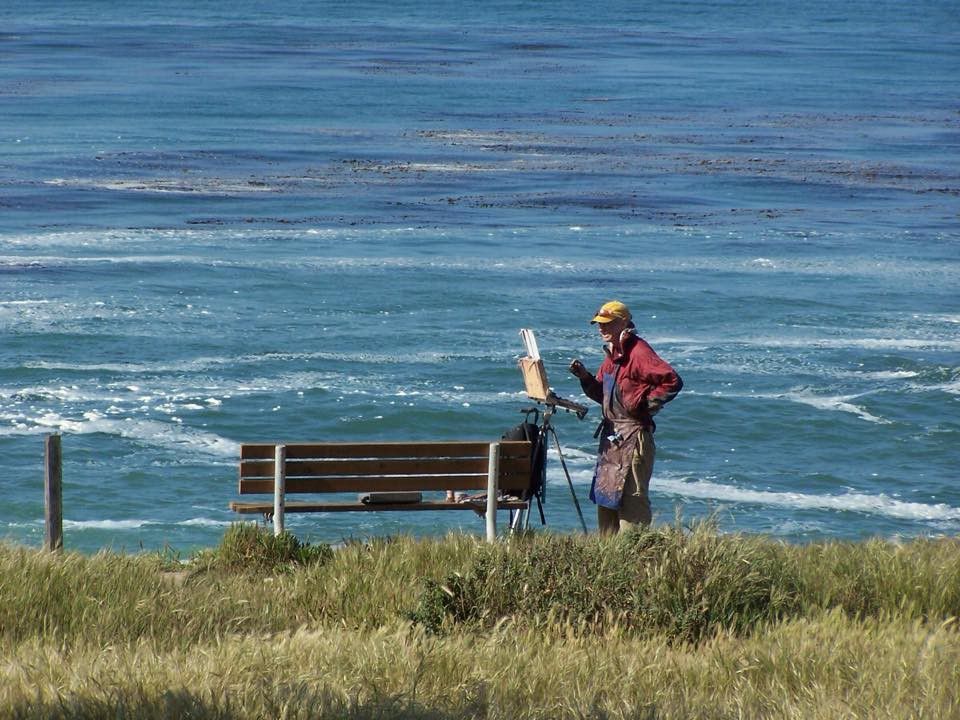
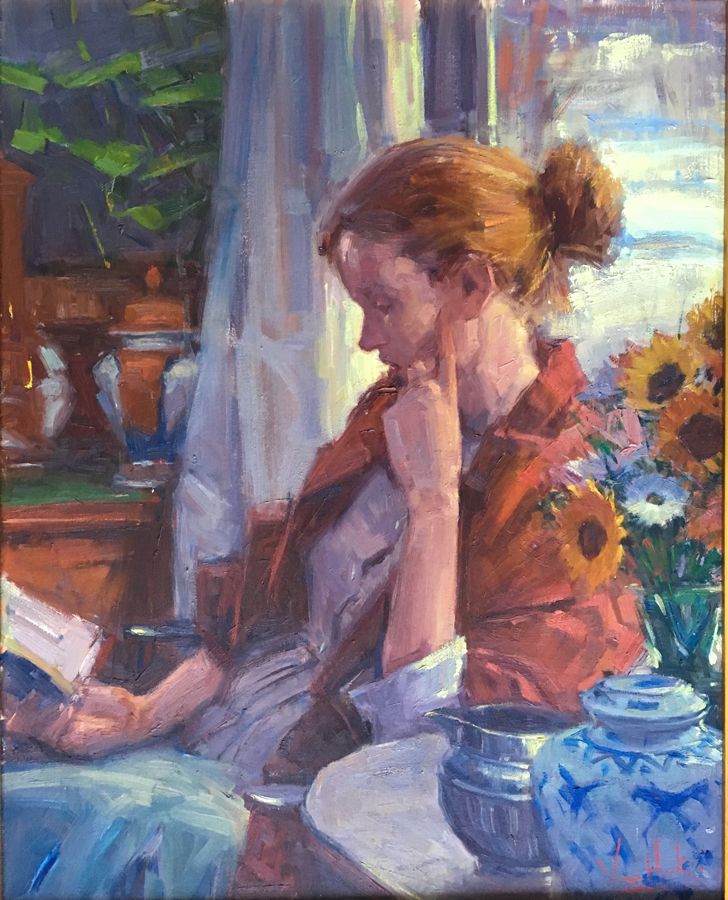
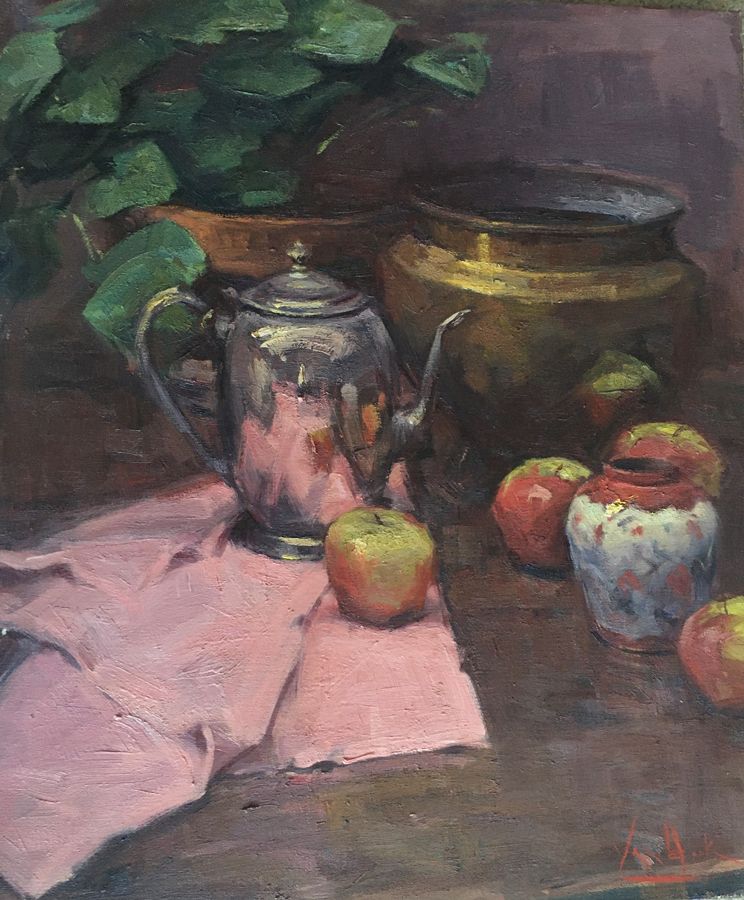
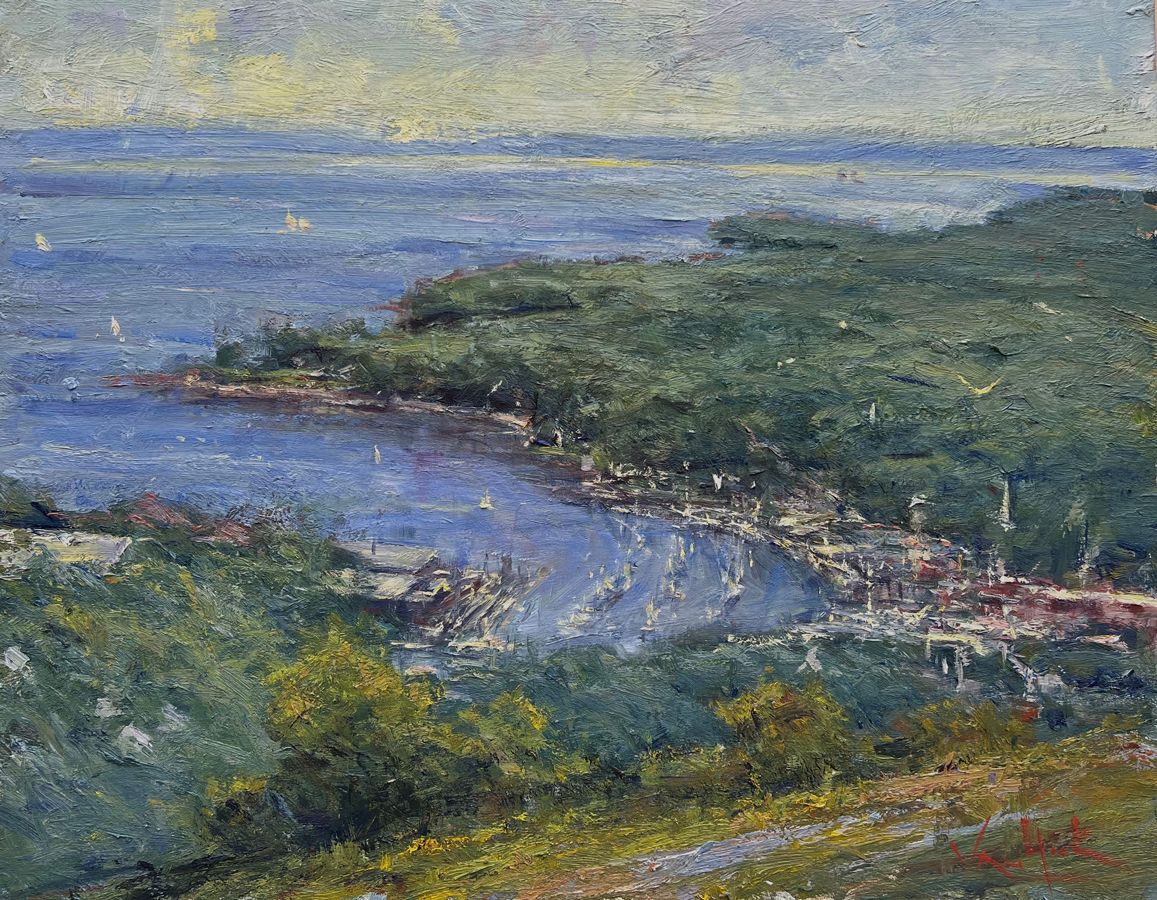
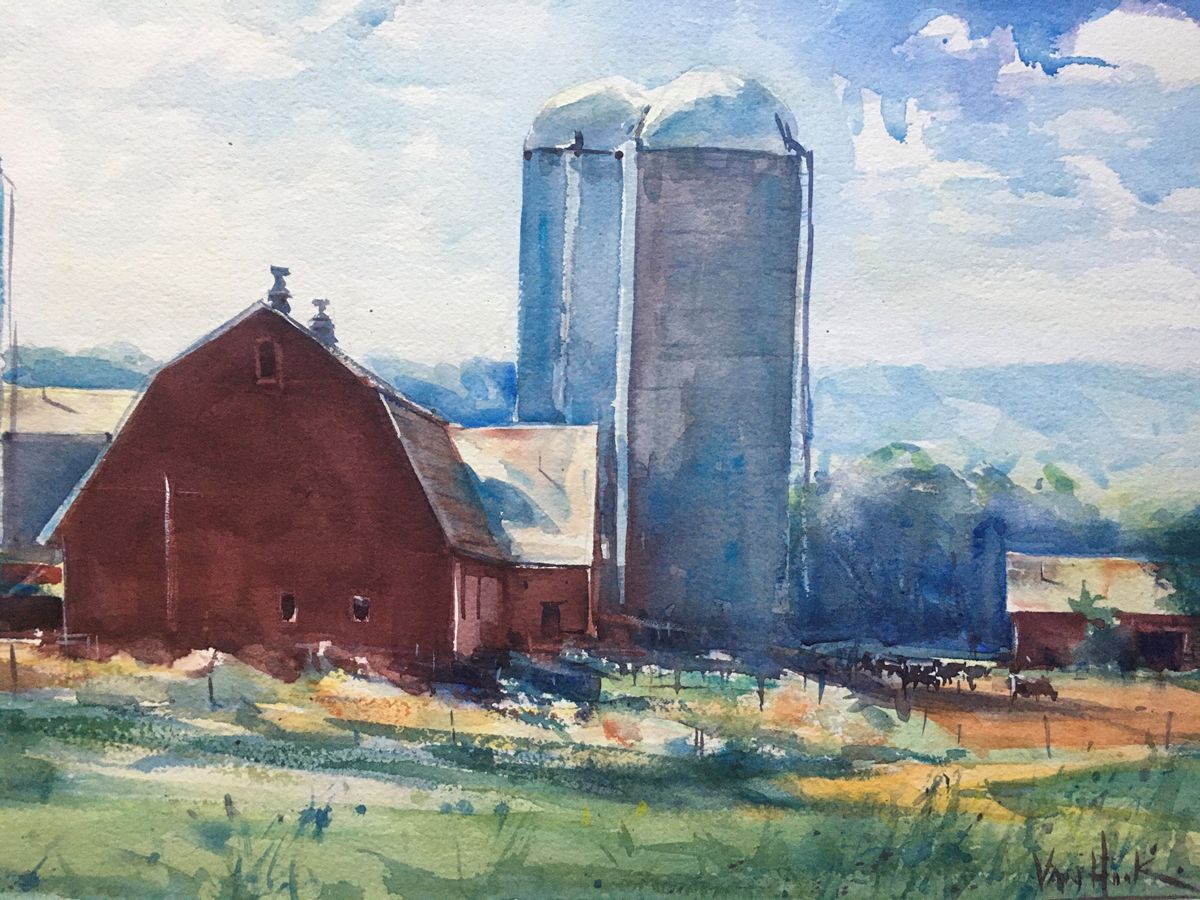
From a Figurative Foundation
Despite being well-known for his landscapes, George considers himself, first and foremost, a figurative artist. When he was starting out, during eight months of 40-hour weeks, George was at the Louvre Museum in Paris, copying figurative from art’s great masters.
“The figure is the fundamental basis of Western art and has been since before the Renaissance. It’s a very classic image,” he said. “There are a variety of surfaces, textures, spaces, and concepts to work with.”
In addition to oils, he also uses watercolors. He and his buddies “get their chops” painting still life, George said.
“It’s the most abstract thing I do. It’s not about the object but the space between the object and how you control your eye movement and field of depth. It’s much more peripheral. It’s a quiet contemplation of form in space and what that is. It’s about creating a much smaller world.”
Both George and Sue are also active progressive democrats, but to paint optimistically, George said he must put politics aside. “I’m not a Pollyanna. I’m very involved in politics and pray, ‘make me stupid so I can paint.’ To paint, you’ve got to let things go. Don’t overthink it.”
“Whether in the studio, painting still life, the figure, or outside in the landscape, it’s all just a continuation of the idea of painting being a celebration of the visual experience.”
Schuylerville’s Laffer Gallery reopened this spring with a show of George Van Hook’s paintings, running until April 7th. His pieces can also be found at Saratoga’s Silverwood Gallery, and Malta’s Morningside Gallery. He’ll be teaching Portrait Painting at the Monument Center for the Arts in Bennington on April 6th.
For more information, visit www.georgevanhookfineartist.com
